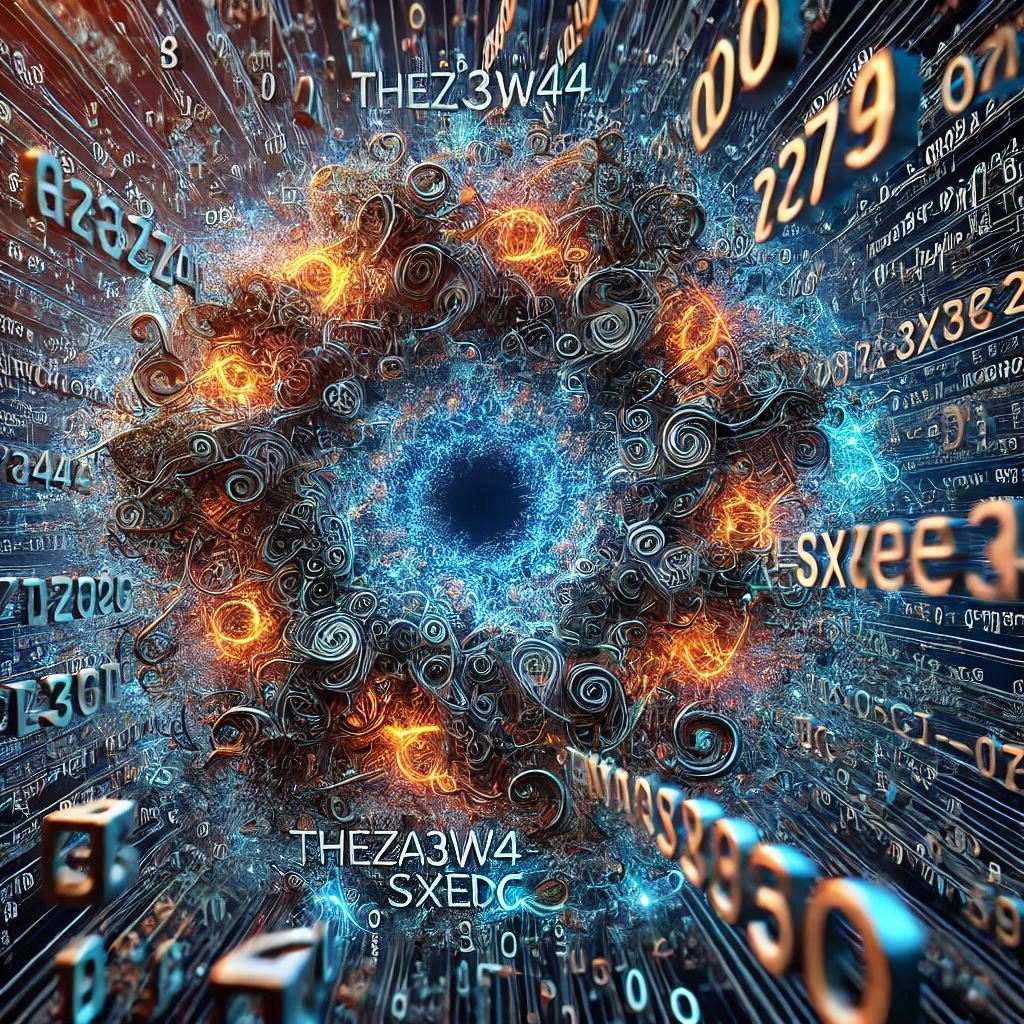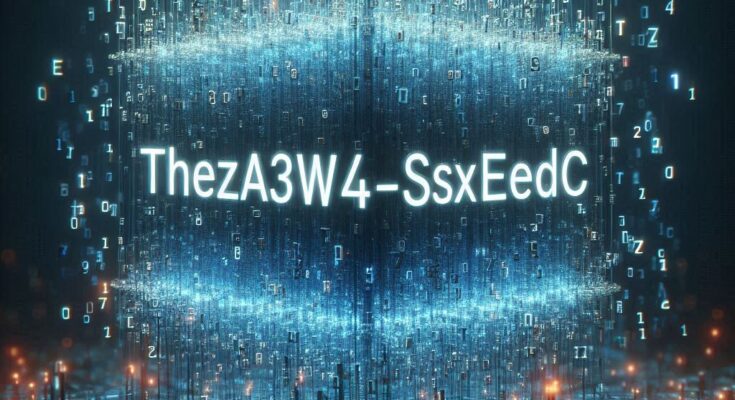Introduction
The term “theza3w4-sxedc” might initially appear to be a random sequence with no clear meaning or significance. However, as we dive deeper into its potential applications, we find that random strings like this one can play crucial roles in various technological fields. Whether it’s in software development, cybersecurity, artificial intelligence, or even the realm of cryptography, random sequences often serve as foundational elements for ensuring security, functionality, and innovation.
This article will explore the possible interpretations and uses of “theza3w4-sxedc” in technology and beyond, discussing its importance in areas such as encryption, data science, and AI. By the end, you’ll see how even the most seemingly meaningless strings can have vital roles in shaping the digital world.
Potential Connection to Technology
When we encounter an unfamiliar string like “theza3w4-sxedc,” the first place to look is the world of technology. In many programming environments, random sequences of characters are regularly generated and used for various purposes. These random strings can be critical in everything from generating unique identifiers to forming secure passwords or encryption keys. More:

For example, developers use random sequences in applications to create session tokens or identifiers for users. In a web application, when a user logs in, the system might generate a unique session identifier, such as “theza3w4-sxedc,” to track the user’s activity. This prevents any potential conflicts between different users’ sessions and helps maintain a secure and efficient system.
Moreover, random strings are also used in certain algorithms for simulations or testing purposes. By employing randomness in coding, developers ensure that systems can handle unpredictable scenarios without failure.
Cybersecurity and Cryptography
One of the most critical uses of random strings, including ones like “theza3w4-sxedc,” is in the field of cybersecurity. In modern encryption techniques, randomness is essential to maintaining the confidentiality and integrity of sensitive data.
For example, a random sequence is frequently used as an encryption key. In asymmetric encryption, for example, RSA uses random numbers to generate a pair of keys: a public key and a private key. The quality of the random numbers matters since a predictable or easily guessed key would break the encryption.
In the case of a string like “theza3w4-sxedc,” it could serve as part of a cryptographic hash function or as a component of an encryption algorithm, ensuring that information transmitted over the internet is safe from hackers and unauthorized access.
Even in the generation of passwords, for example, characters such as “theza3w4-sxedc” are usually common. The very strong passwords that are long and random are challenging to guess, and this means that a character sequence such as this one would be more than ideal in securing accounts for use.
Theza3w4-sxedc as a Random Term
Randomness plays a crucial role in various technologies, even beyond encryption. In data science and machine learning, random sequences are frequently used in simulations, data augmentation, and model testing.
In machine learning, random sequences help train models more effectively. When designing AI models, especially neural networks, it’s essential to start with random values for parameters (such as weights) in order to avoid bias. The algorithm then adjusts these values during training to improve the model’s predictions. Moreover:

In the case of “theza3w4-sxedc,” a string like this might be used to initialize weights in a neural network or generate random inputs for the model to process. Randomization in this context ensures that the AI doesn’t learn patterns too rigidly or overfit to the training data. Overfitting occurs when a model is too tailored to the specific data set and cannot generalize well to new data, making randomness an important tool to ensure that models stay flexible and adaptable.
Additionally, in random forests—an ensemble learning method—random subsets of the data are used to build a collection of decision trees. This randomness helps improve accuracy by reducing the model’s variance and ensuring better generalization.
Artificial Intelligence and Machine Learning
Artificial intelligence and machine learning rely heavily on randomization. Theza3w4-sxedc could, in theory, be used as part of a random initialization for AI models or in algorithms that require unpredictable inputs.
In AI, randomness is not just about random values in data or weights, but also in the generation of outputs. For example, in generative adversarial networks (GANs), randomness is key to generating diverse outputs. GANs are used for creating realistic images, music, and even text. Random strings like “theza3w4-sxedc” might be part of the noise input that the generator uses to produce creative outputs.
Furthermore, randomization plays a role in reinforcement learning, where an agent explores different strategies based on rewards. The agent doesn’t know what actions will lead to success; it must try various possibilities, some of which are guided by randomness. This exploratory behavior encourages innovation and the discovery of efficient strategies in AI systems.
Future Applications
Though “theza3w4-sxedc” may seem like an arbitrary sequence, random terms like this could have important roles in the future of technology. As advancements in fields like quantum computing and blockchain continue, the need for new ways to generate and use random sequences will grow.
In quantum computing, for instance, quantum randomness is central to the generation of secure cryptographic keys and other processes. This randomness arises from the behavior of subatomic particles, which are inherently unpredictable. As quantum technologies evolve, the ability to leverage such randomness will likely enhance encryption methods and computational power.
In blockchain technology, secure hashes are generated using random sequences that ensure the decentralized ledgers have integrity. Randomness ensures that the data remains tamper-proof and that the blockchain is secure from malicious actors. DoFollow:

In addition, randomness may be applied in augmented reality and virtual reality, which are becoming increasingly developed. Randomness may be used to create unique and personalized experiences for users. The more immersive the technologies become, the more varied the virtual worlds will be, and the experience will never be the same again.
Conclusion
At first glance, “theza3w4-sxedc” might appear to be just another random sequence with no real significance. However, upon closer inspection, we see how such random strings can play crucial roles across a range of technological fields. Whether it’s used for encryption keys, AI models, or data science experiments, the value of randomness cannot be understated.
As technology continues to evolve, random sequences like “theza3w4-sxedc” will undoubtedly become even more integral to new developments, from quantum computing to blockchain to personalized virtual experiences. Understanding how these strings are used—and the critical role they play in maintaining security, functionality, and innovation—allows us to better appreciate their importance in shaping the future of technology.
Colete Dracojade Em Distrito 9 Onde Encontrar O Item Tudo Sobre Isso



2 Comments on “An In-Depth Analysis Of Theza3W4-Sxedc And Its Aspects”